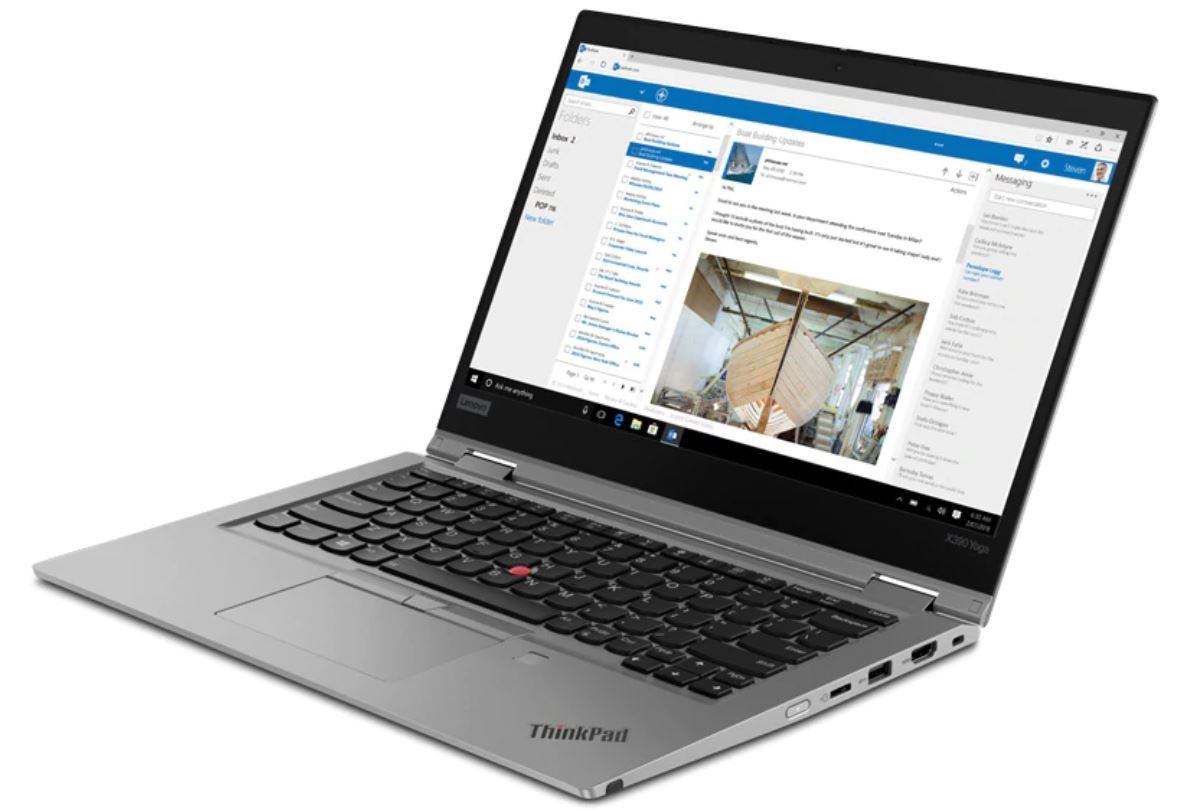Get the Right Laptop for IT Certification and Training

If you work in IT, then you should always be learning something. Given my longtime interests and proclivities, that means I'm quite often chasing down one or more training courses, usually with some kind of certification tie-in.
The rhythm of this learning has changed profoundly for me in the past half-decade. I now tend to use it to fill otherwise idle or empty moments, especially when I'm between online meetings or phone calls, or I've just finished something and I have a half-hour or less before my next meal or break.
I've also found training materials to be particularly engaging if you can access them while traveling; otherwise, I often turn to eBooks instead (as long as I download them into Kindle in advance, I can get hours' worth of content that's viewable with no Internet connection).
The way that technology outlets — Cisco, Microsoft, and HPE, for example — or training companies like PluralSight, edX, and LinkedIn, structure their materials nowadays, you can easily ingest interesting and potentially useful training nuggets in periods of between 5 and 15 minutes.
All that being said, the question I seek to answer today is: "What kind of PC is good for this sort of thing?"
The Compact, Portable Training PC
Because such a PC has to be compact and mobile and go with you wherever you are, an ultrabook or tablet PC makes a good platform for consuming training. It needs to be cheap enough to use as a "second laptop," so that you can avoid jumping back and forth between "real work" and "training work" on the same machine.
In some companies, this may even be required because of limitations on personal use of company equipment. That said, I do this routinely, and use Remote Desktop Connection or Remote Desktop in Windows 10 to access the training machine over the network in a window.
That makes it very easy for me to switch in an out of a training desktop, even while using my production desktop for writing and client work at the same time.
So what should learning-invested IT pros be in the market for? Here's a set of affordable components and capabilities that savvy PC buyers will want to budget for (higher-end components cost more, but boost learning speed and productivity):
Form factor: "Ultrabook" usually means a 12-13.3-inch display, with dimensions that are easy to fit in a backpack or notebook — the Lenovo X390 Yoga shown here is my mobile learning platform of choice. Its dimensions are 12.2 inches by 8.6 inches by 0.63 inches, or 310.4 millimeters by 219 millimeters by 15.95 millimeters. Weight: 2.85 pounds, or 1.29 kilograms. I've carried this laptop and another tablet or laptop on many family trips without difficulty or unusual fatigue. (The TSA guys usually smile when they see somebody packing out multiple PCs, though.)

Ed does his training on a Lenovo ThinkPad X390 Yoga.
CPU: You should look for a quad-core i5 or i7 (or AMD equivalent). You need enough horsepower to handle animations; complex, interactive demos and simulations; and multiple open windows with relative ease. The X390 has an eighth-generation, quad-core i7-8565U, and it does the job nicely. A quad-core i5 would also be up to the job, but would run 15-20 percent more slowly.
RAM: You'll need a minimum of 8 GB, where the old saying "more is better" applies to Windows PCs in spades. The X390 I use has 16 GB and I seldom see more than 10-12 GB in active use.
Display: Don't go with less than Full HD (1920x1080) resolution, and make sure you get brightness of 300 nits or better. Higher resolution displays are available, and may be a little easier on the eyes, but they often reduce battery life and invariably cost more. That said, I've used a Surface Pro 7 on the road. It's 2736x1824 resolution is very readable, and battery life still remains respectable.
Storage: You'll want an SSD drive with at least 500GB capacity (some single courses will suck up between 5 and 10 GB of storage space without blinking). The X390 has a 1 TB Intel NVMe SSD that's commodious and snappy.
Networking: You'll want at least 802.11ac (or ax) Wi-Fi. It's often worth springing for a GbE dongle or plug-in adapter (the X390 includes a built-in Intel I219-V NIC, but you have to spend about $30 to obtain a dongle that plugs into the laptop on one end, and exposes an RJ-45 jack for the wired Ethernet cable on the other). Many laptops also offer cellular radios (LTE is common, 5G less so). You'll have to consider whether the added connectivity is worth the extra cost (usually US$300-400, plus monthly service and usage costs).

Tablet mode operation: Many ultrabooks and hybrid tablets can operate purely as tablets. This can be handy in cramped spaces (like economy seats on airlines, or when traveling by train or bus). Most such units either fold all the way over (ultrabooks) or let you detach the keyboard cover to work in tablet mode. Especially for reading, or consuming training content, this works pretty well.
Battery life: For working in untethered mode, battery life is critical. I wouldn't recommend any candidates whose third-party reviews report less than 8 hours of battery life on a mixed video/web surfing workload (that's what consuming training content is basically about). Lenovo claims 14.5 hours of battery life for the X390, for example, but I've never gotten more than 10-to-11 hours out of that machine in actual use.
Budgeting Is the Hard Part
I'm a great believer, especially when trying to limit out-of-pocket costs, in buying a couple of generations back from whatever's new and current. I'm also a big fan of laptop makers' refurbished and outlet laptop offerings. You can usually save up to 50 percent on the cost of a similarly-equipped new PC, or get more features and capability for less overall cost.
I bought my X390 from the Lenovo Outlet in December 2019. When the identically configured model shipped in February 2019 it was touted "as light as the MacBook Air." It also listed for $2,200 (U.S.) as described in the preceding configuration info. I paid just over $1,100 (U.S.) when I purchased mine the following December including sales tax.
Set a firm upper bound on your budget, and then try to find the best components (lightest, most powerful, longest battery life, usable display) you can get for that budget. You can always find a more expensive machine. The real challenge — and for me at least, the real fun — is in finding a great laptop at an equally great price.
Today, that means ninth-generation/Coffee Lake equipment (or AMD equivalent) in an ultrabook or hybrid tablet form factor. For the record an X390 configured just like mine is still available, for less than $600 (U.S.). If you shop around, then you'll be able to get yourself set up without breaking the bank.
After that, you can proceed to enjoy your learning and training adventures whenever and wherever you feel like it.





